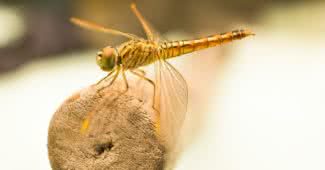The sleep patterns of animals vary significantly. Some animals can go without sleep for extended periods. However, they still require periods of rest or inactivity for proper growth and development. Here are the ten animals that don’t sleep for the most prolonged periods.
10Jellyfish
When disturbed during the last 6 hours of the night, jellyfish showed a 12% decline in pulsing the next day. Thus, the trouble the researchers had in waking up the jellyfish suggests that they reduce their activity at night and show slower responsiveness to stimuli. So, even without brains, these animals still require periodic rest.
9Walrus
Like elephants, walruses can go for days without sleep and swim up to 84 hours without recharging. They have unique sleeping positions and prefer unihemispheric slow-wave sleep, during which one side of the brain rests while the other stays alert to threats.
Top 10 longest migrations in animal kingdom
8Horse
During the night, horses alternate between rest and activity, starting their day by snoozing while standing up, grazing, and then taking a few minutes of deep sleep. Watching how they manage to stay alert despite their limited sleep is fascinating!
7Giraffe
Giraffes must sleep intermittently because they must always be alert to the many risks they might face in the wild, like the presence of several predators. Additionally, Giraffes continuously chew partially digested food to break it down even more, allowing them to sleep briefly.
6Orca
Adult Orcas typically sleep for 5 to 8 hours. New killer whale mothers won’t sleep for three weeks after giving birth. Because new mothers become virtually deprived of their sleep as they tirelessly attend to the needs of their calves to ensure their babies breathe properly and stay warm.
5Butterfly
Although butterflies don’t experience traditional sleep like many animals, they can enter a quiescent state, a state or period of inactivity or dormancy. During this period, they rest with their eyes open, hidden in leaves, barks, or bushes. They often hang upside down and sleep underneath leaves to hide from predators. However, Warning-colored butterflies can only stay less hidden to deter predators.
4Bluefish
Bluefish, also known as snapper or tailor, are a highly migratory species that travel seasonally along the Atlantic coast of the United States. As pelagic fish, they mostly stay within the water column. Most wild fish species do not sleep during their migration periods. Although bluefish appear to be sleeping, they can swim constantly and respond to stimuli.
An adult bluefish reproduces during spring and summer and live up to nine years. As strong and aggressive, adults prefer living in loose groups. Bluefish often chase bait through the surf zone to attack schools in very shallow water by churning the water like a washing machine, sometimes called a “bluefish blitz.”
3Alpine Swift
Alpine Swifts are small birds that can fly all the way from Switzerland to West Africa. Remarkably, these birds can maintain their navigational ability even during REM sleep, meaning when their eyes are closed. Researchers from Bern University and the Swiss Ornithological Institute found that alpine swifts can fly for up to 200 days without stopping.
The published results of their findings in the journal Nature Communications suggest that slow-downs or periods of reduced activity observed when the birds glided more than flapped is no evidence to prove the birds are sleeping. However, scientists are still unsure if they have some special way of resting or sleeping while flying.
2Bullfrog
However, they also experience a period of brumation each year, which some consider a form of binge sleeping after no sleep. For the rest of the year, they rest but never enter a deep slumber. Scientists are still researching bullfrog resting patterns to understand how they survive until brumation.
Related Articles
1Baby Dolphin
If they sleep comfortably, there is always a danger of drowning in water. So, to avoid this danger, a dolphin sleeps only a part of its brain while sleeping. In contrast, the other part of their mind remains fully alert to help them breathe and be aware of the dangers of predators such as sharks.




